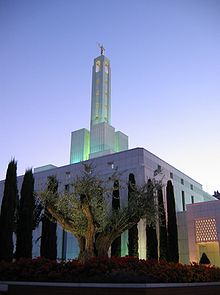Podcast: Play in new window | Download (Duration: 14:00 — 12.8MB)
Subscribe: Apple Podcasts | RSS
Over the past few years I have noticed a correlation between the content given in LDS Church magazines and the assigned readings in the church manual series Teachings of Presidents of the Church. Although it is brought up regularly in church talks and publications, the topic of the temple has been made into the prevailing theme in July 2015.
 Two chapters each month are covered in the current “Presidents of the Church” series; in July, chapter 13 (“Priceless Blessings of the House of the Lord”) and chapter 14 (“Marriage and Family: Ordained of God”) were assigned from the Ezra Taft Benson manual. The temple was also featured in July’s official church magazines: the Ensign (several articles were used, including one discussing the preparation to enter a temple), New Era (helping “youth prepare for temple ordinances”), and Friend (helping “your children learn about and prepare for the temple” and “to go inside someday”).
Two chapters each month are covered in the current “Presidents of the Church” series; in July, chapter 13 (“Priceless Blessings of the House of the Lord”) and chapter 14 (“Marriage and Family: Ordained of God”) were assigned from the Ezra Taft Benson manual. The temple was also featured in July’s official church magazines: the Ensign (several articles were used, including one discussing the preparation to enter a temple), New Era (helping “youth prepare for temple ordinances”), and Friend (helping “your children learn about and prepare for the temple” and “to go inside someday”).
Each of the above publications stressed the necessity of “being worthy” to attend the temple. For example, Seventy Kent F. Richards writes on page 18 of the Ensign article, “In order to receive the Spirit, you must enter the temple clean and pure, free from any unforgiven transgression.” By signing a temple recommend card, the patron is “witnessing [his/her] worthiness before the Lord.” In a “key point” section, it says that “in the temple you receive ordinances essential to your salvation. You must enter the temple clean and pure, free from any unforgiven transgression.”
In chapter 13 of Benson’s manual, this same theme is prevalent. (MRM provides reviews of each chapter of this manual.) The carrot to temple work? Benson is quoted on page 171 as saying, “If a couple are (sic) true to their covenants, they are entitled to the blessing of the highest degree of the celestial kingdom. These covenants today can only be entered into by going to the House of the Lord.” And then “… it is in the temples that we obtain God’s greatest blessings pertaining to eternal life. Temples are really the gateways to heaven.”
On the next page, he said, “We will not be able to dwell in the company of celestial beings unless we are pure and holy… No member of the Church can be perfected without the ordinances of the temple.” The chapter concludes with this: “Let us make the temple a sacred home away from our eternal home.”
I find it interesting how many people recently have pointed to Dieter F. Utchtdorf’s talk in last April’s conference (“The Gift of Grace”) as somehow lining up with Evangelical Christianity. It does not. (Find a written review of this talk as well as links to Viewpoint on Mormonism podcasts here.) And if a Latter-day Saint doubts my view, then ask him/her why everyone saved by grace shouldn’t be allowed to enter Mormon temples!
 There is a list of requirements. First, baptism and confirmation are surely required before a convert can start planning a trip to a temple. Then, “as you increase your spiritual maturing, you will desire to prepare for and enter the temple. There you will receive ordinances and make covenants, which are necessary steps to draw closer to your Heavenly Father… You enter the temple and make covenants because you will exist eternally and want to be with your Heavenly Father and your family…” (Ensign, July 2015, p. 18). To be able to get into the temple, a Mormon needs to “keep standards, and…worthily carry a limited-use temple recommend. Church programs will help you, but your preparation is personal; you are developing your worthiness, your testimony, your conversion.” Notice how the word “your” was emphasized in that quote. It is based on “you” and how well “you” tithe, abstain from alcohol and hot drinks, and keep the other prerequisites.
There is a list of requirements. First, baptism and confirmation are surely required before a convert can start planning a trip to a temple. Then, “as you increase your spiritual maturing, you will desire to prepare for and enter the temple. There you will receive ordinances and make covenants, which are necessary steps to draw closer to your Heavenly Father… You enter the temple and make covenants because you will exist eternally and want to be with your Heavenly Father and your family…” (Ensign, July 2015, p. 18). To be able to get into the temple, a Mormon needs to “keep standards, and…worthily carry a limited-use temple recommend. Church programs will help you, but your preparation is personal; you are developing your worthiness, your testimony, your conversion.” Notice how the word “your” was emphasized in that quote. It is based on “you” and how well “you” tithe, abstain from alcohol and hot drinks, and keep the other prerequisites.
When it comes to the LDS temple, consider what LDS leaders have emphasized. For one, they say that there was a great apostasy, which supposedly eliminated God’s authority throughout the world. Everything the church does is supposed to rest on the need for a “restoration.” If this is the case, then there should be a clear connection between the Jerusalem temple and the more than 140 LDS temples. Yet there is not.
Consider, for example, that the biblical temple was a place where the blood sacrifices of animals took place by priests commissioned by God for the temporary forgiveness of sins. (It was temporary because people would again sin.) Hebrews chapter 10 explains how Christ’s sacrifice once for all eliminated the need for a physical temple; this is the only reason why Christians throughout the past 2000 years have not tried to reinstitute a physical temple of any kind. Because of what Christ did (verse 10 reads, “And by that will we have been sanctified through the offering of the body of Jesus Christ once for all”), it has always been accepted that a temple of any kind is not needed.
However, Mormonism has returned the need for temple work while setting up regulations that ancient Jews and Christians never accepted, including learning tokens and new names, performing baptisms for the dead, marrying for “time and eternity,” getting sealed to relatives, and other rites never practiced by the Levitical priests or, for that matter, anyone associated with the temple. Rather, blood sacrificial work was performed daily, the main purpose of the temple!
Richards writes on page 18, “To be worthy does not mean you are perfect yet. It means that your heart is right, that you are living the commandments, and that you desire to be better each day.” A Mormon might find consolation that he or she doesn’t have to be “perfect yet” in order to enter a temple. And perhaps the LDS believer feels as long as his/her “heart is right” and he/she “desire(s) to be better each day,” everything is fine.
 But the middle requirement is the kicker: the Mormon must live the commandments. Repentance can only go so far. D&C 58:43 plainly lays it out: “By this ye may know if a man repenteth of his sins—behold, he will confess them and forsake them.” And D&C 1:32 adds, “Nevertheless, he that repents and does the commandments of the Lord shall be forgiven.” As I told one Mormon recently who almost appeared to be bragging at how often he repented, “Perhaps you need to quit repenting so much and just do what you’re commanded.”
But the middle requirement is the kicker: the Mormon must live the commandments. Repentance can only go so far. D&C 58:43 plainly lays it out: “By this ye may know if a man repenteth of his sins—behold, he will confess them and forsake them.” And D&C 1:32 adds, “Nevertheless, he that repents and does the commandments of the Lord shall be forgiven.” As I told one Mormon recently who almost appeared to be bragging at how often he repented, “Perhaps you need to quit repenting so much and just do what you’re commanded.”
In Mormonism, exaltation can only be gained through continual obedience. It is in the temple where a Mormon regularly makes promises that can never be fulfilled. The attitude fostered in Mormonism flies in the face of Jesus’s parable in Luke 18 concerning the Publican and the Pharisee:
9 He also told this parable to some who trusted in themselves that they were righteous, and treated others with contempt: 10 “Two men went up into the temple to pray, one a Pharisee and the other a tax collector. 11 The Pharisee, standing by himself, prayed thus: ‘God, I thank you that I am not like other men, extortioners, unjust, adulterers, or even like this tax collector. 12 I fast twice a week; I give tithes of all that I get.’ 13 But the tax collector, standing far off, would not even lift up his eyes to heaven, but beat his breast, saying, ‘God, be merciful to me, a sinner!’ 14 I tell you, this man went down to his house justified, rather than the other. For everyone who exalts himself will be humbled, but the one who humbles himself will be exalted.”
According to Christianity, nobody needs the temple. Rather, everyone needs a relationship with Jesus. This can take place in humility, realizing that forgiveness of sins is available for the asking (see Acts 16:31; Rom. 10:9-10). Only when a person accepts the Gospel message and the Jesus described in the Bible is it even possible to receive the free gift of salvation. Our efforts will just never cut it.
Podcast: Play in new window | Download (Duration: 14:00 — 12.8MB)
Subscribe: Apple Podcasts | RSS
It’s Throwback Thursday!
The following blog article originally posted at Mormon Coffee on July 24, 2006.
——
Today [tomorrow] is Pioneer Day in Utah. Each July 24th the residents of Utah celebrate the “Days of ’47” commemorating Brigham Young’s 1847 arrival in the Great Salt Lake valley. This holiday is a big deal; a state holiday with parades, fireworks and family picnics. It’s a lot like the 4th of July is for the rest of the United States.
Being Pioneer Day, you can understand that the festivities place an extra emphasis on the Mormon pioneers who settled Utah. More than usual, that is. Mormon Pioneer heritage figures prominently in the identity of today’s Mormons.
We see a lot of artistic renderings of the Mormon pioneers. On canvas and in sculpture they are depicted in various poses and scenes. Sometimes we see their hardships, and sometimes their joys, but almost always we see them in family groupings. The LDS Church emphasizes its commitment to family, of course, and the pioneers who crossed the plains and mountains included mothers, fathers, sisters and brothers.
As an example of artistic portrayals of LDS pioneers, here’s the way the Mormon Pioneers are depicted on the LDS web site:
And here’s a sculpture found on Temple Square in Salt Lake City:
Here’s why I find this interesting. There is a current exhibit at the Culture House, a museum in Reykjavik, Iceland, titled The Road to Zion. The exhibit
sheds light on the religious foundations of the Mormons, traces the journey of Thordur Didriksson (1828-1894) over sea and land, and gives insight into the community that the Icelanders joined and lived in abroad [i.e., Spanish Fork, Utah].
My cousin (who lives in Reykjavik) thoughtfully sent me a booklet about the exhibit, produced by the museum. The booklet includes an excerpt from the journal Mr. Didriksson kept as he crossed America in a Mormon handcart company.
We were in Omaha for three weeks, to prepare for the handcart journey across the prairie. There were 220 emigrants in the company. …The men pulled the carts and the women pushed. …There were over 30 children in the company, and early every morning they were all sent ahead of the adults in one bunch. Some of them had very little clothing, though they all wore hats. They were driven along with willow switches and had to keep walking as long as they were able. It was no use crying or complaining, but during the heat of the day they were allowed to rest and were given food. They were often two or three miles ahead of us. It was hard for the parents to see their five- or six-year-olds driven like sheep. (Church Archives, Ms 8795)
I have never seen an artistic rendering of Mormon pioneer children being driven with willow switches. Have you?
Podcast: Play in new window | Download (Duration: 14:00 — 12.8MB)
Subscribe: Apple Podcasts | RSS
Podcast: Play in new window | Download (Duration: 14:00 — 12.8MB)
Subscribe: Apple Podcasts | RSS
Podcast: Play in new window | Download (Duration: 14:01 — 12.8MB)
Subscribe: Apple Podcasts | RSS
My daughter took The Not Even Once Club book off my shelf and wanted me to read it as a bedtime story. I can’t blame her: it has fun and inviting pictures.
I told her it was not a book I agreed with. “Why not?” We read through it slowly together. Here were my follow-up discussion questions:
“If we confess our sins, he is faithful and just to forgive us our sins and to cleanse us from all unrighteousness.” (1 John 1:9)
Podcast: Play in new window | Download (Duration: 14:00 — 12.8MB)
Subscribe: Apple Podcasts | RSS
Former Mormons who are now Christians say that this 21 minute video has been instrumental in helping them recognize the differences between the biblical view of salvation and the Mormon view of eternal life. It helped them understand what God has done to rescue them — to rescue all of us — from the consequences of our sin. Maybe the video will help you, too, to either come to know the biblical plan of salvation, or to help others realize and receive the gift of redemption God freely offers.
You will find the diagrams and scripture lists referenced in the video below, but you may want to download a pdf copy for future use. You will find the downloadable file “Eternal Life Diagram” at Tri-Grace Ministries.
May God continue to use this presentation of His truth to draw people to Himself.
[NOTE: The video referred to above has disappeared from You Tube (as far as I can tell). I have replaced the embed link with the following video that discusses the same topic with the same visual diagrams. -SAL]